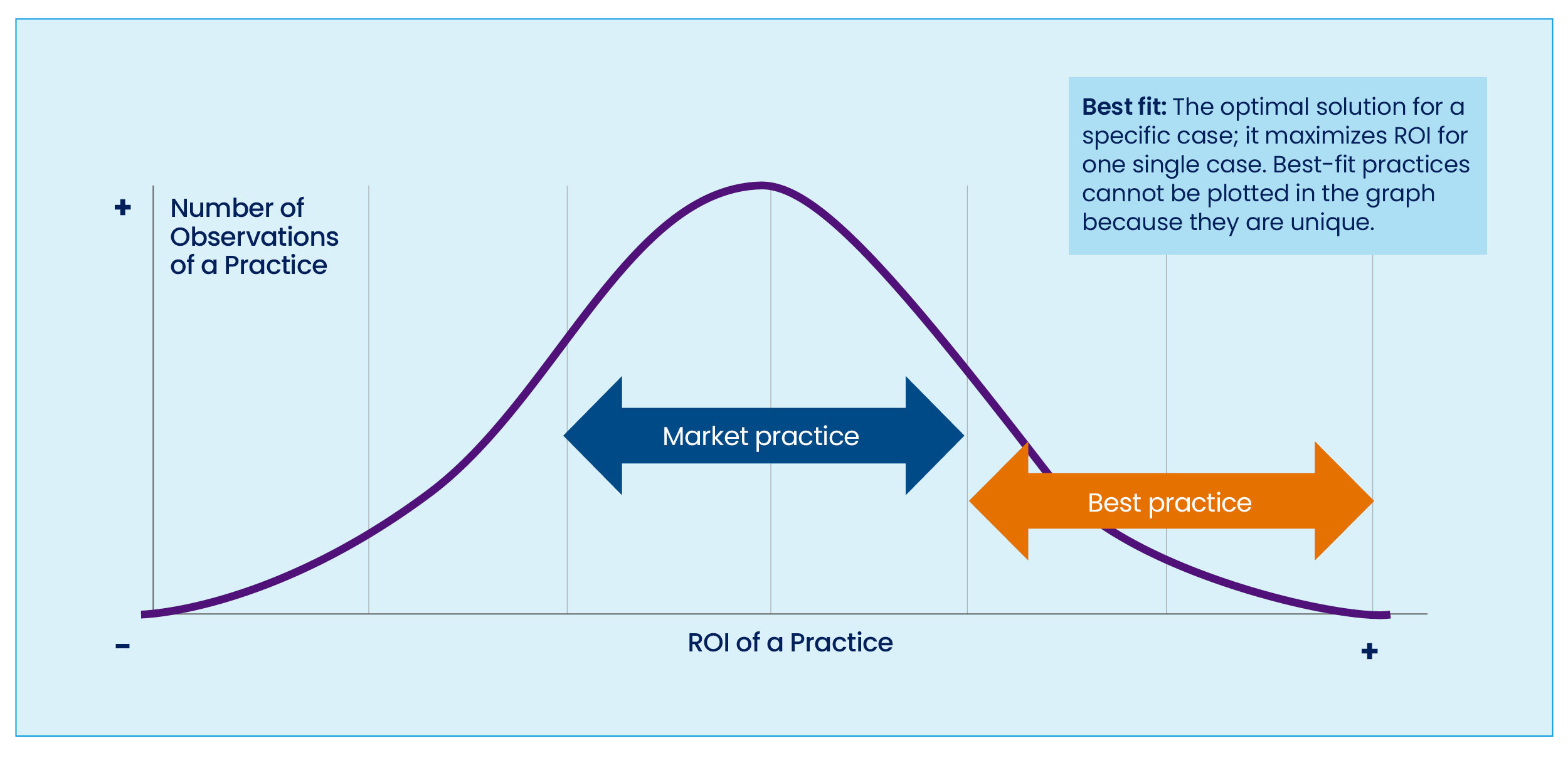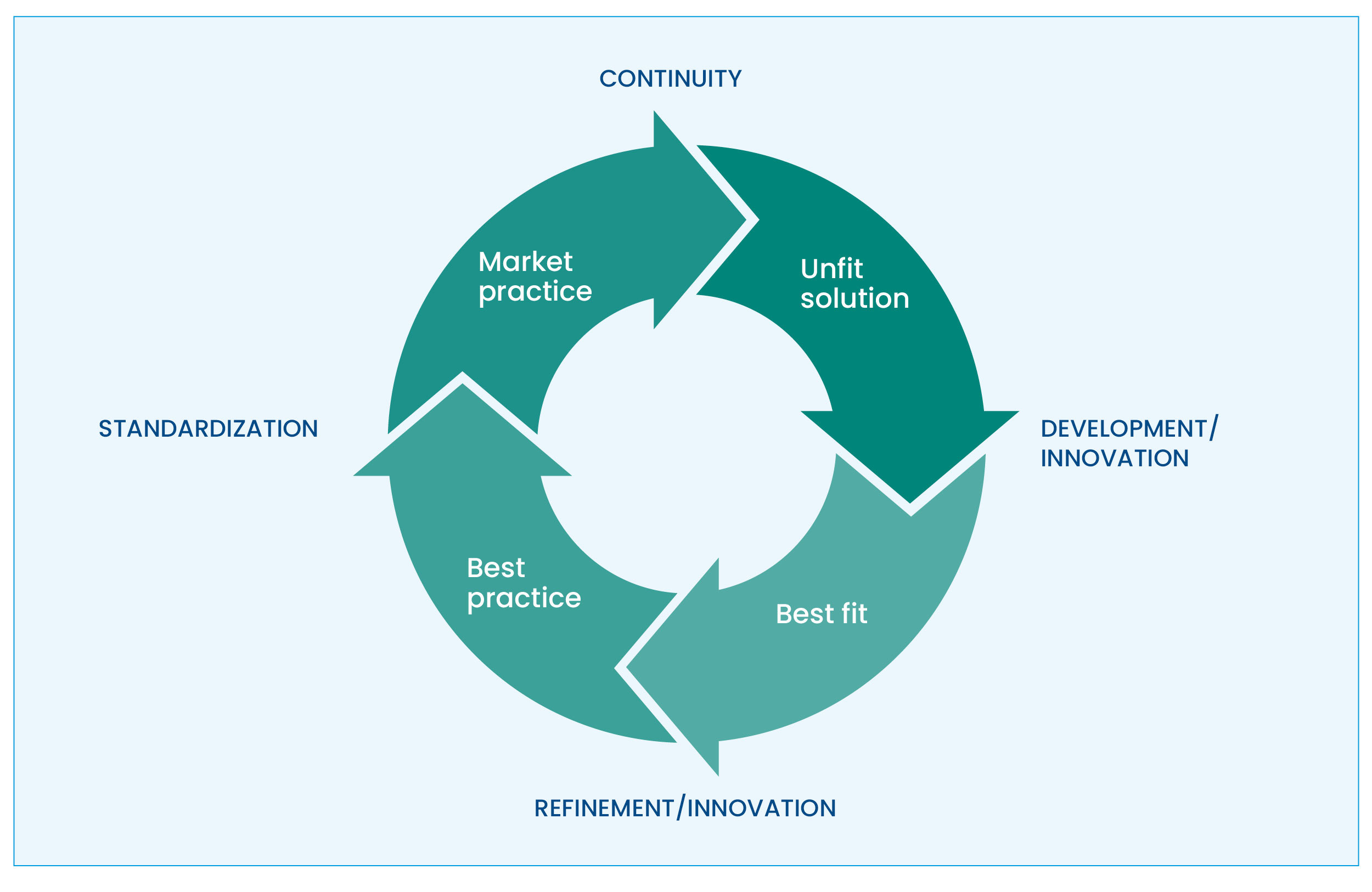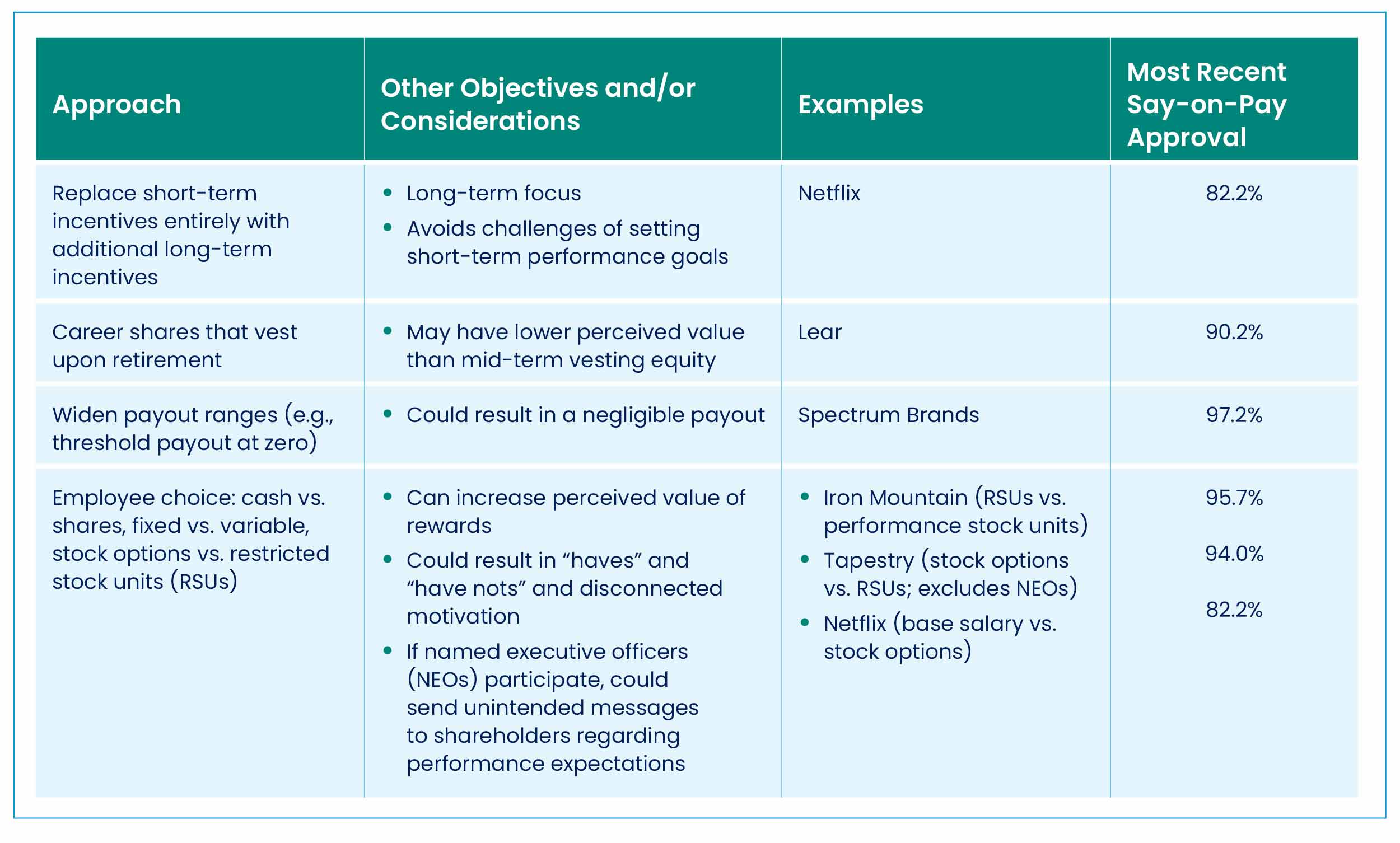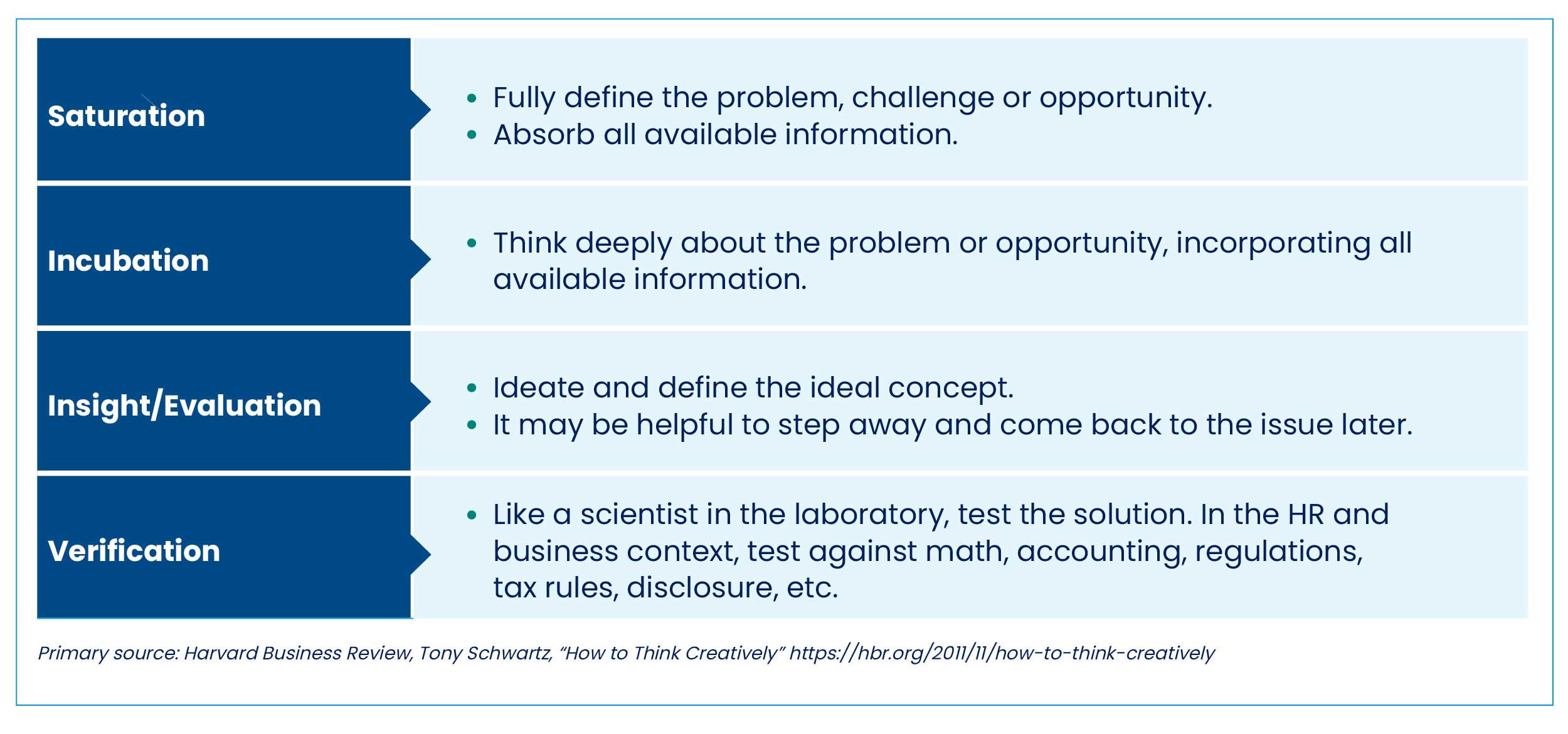- Avoid a cookie-cutter approach. When crafted and applied properly, innovative executive compensation practices fit an organization’s specific needs and circumstances.
- Market or best practice may not be optimal. Creativity and innovation in pay practices are likely borne from a desire to move on from market practice and even best (or leading) practice and on to “best fit.”
- Knowledge is power in plan design. Innovation process success likely requires both a clear definition of the problem or opportunity and a deep understanding of all related aspects.
Executive compensation design has truly evolved over the past three decades. In the mid-1990s, the typical executive pay package was base salary, annual incentives and a grant of plain-vanilla stock options. The attraction of options was due to the technology industry’s influence (plus the strength of the “dot.com” stock market) and the lack of accounting expenses on option grants.
Once the dot.com bubble collapsed and options attracted accounting expenses, organizations began to experiment with executive pay packages and incentive plan designs. Companies introduced various options (i.e., discounted, indexed, truncating, reload) as well as career shares, market-leveraged stock units and many other incentive designs.
Many organizations have settled into a third modern era of pay design that is largely characterized by monotony and a considerable reduction in variety. This has largely been driven by a fear of straying too far from “market practice.”
That era of invention and innovation ended relatively quickly, and over the past 15 to 20 years, many organizations have settled into a third modern era of pay design that is largely characterized by monotony and a considerable reduction in variety. This has largely been driven by a fear of straying too far from “market practice.”
With the widespread influence of proxy advisors, a concentration of share ownership among large institutional investors and the adoption of required say-on-pay votes, many executive teams and board members are rightly concerned with ensuring their pay practices are met with the approval of increasingly powerful and involved stakeholders.
What Is Innovation in Pay Design?
When crafted and applied properly, innovative practices fit an organization’s specific needs and circumstances. This means innovation is not always necessary. If typical pay practices and pay levels perfectly fit the organization’s needs, nothing unusual or extraordinary is needed. But in general, few organizations will likely say they are perfectly typical and have all the same problems, good fortunes, obstacles and advantages as their peers.
Learn: Executive Compensation Immersion Program
In effect, creativity and innovation in executive pay practices are likely borne from a desire to move on from market practice and even best (or leading) practice and on to “best fit.” Best fit refers to the optimal solution to address a specific problem or accomplish a set of objectives. The best-fit solution aims to maximize the return on investment (ROI) for that specific problem or set of objectives. On a plot of market practices (see graphic below), the best-fit solution often cannot be plotted because it is unique.

When organizations utilize best practice as a copy-paste solution, it becomes, through repetition, market practice (which, by definition, is not as good as best practice). This happens because the competitive environment and associated challenges change over time and new innovative solutions appear that can eventually define best practice.
As best practice becomes more common, it evolves into market practice and likely becomes an unfit or suboptimal solution for many organizations. This forces development and innovation of new ideas and practices — and creation of new best-fit practices. Through refinement and adaptation into more organizations, these best-fit practices become recognized as best practice and the process continues (see graphic below).

In this process of developing a best-fit solution, organizations should not either adopt or avoid unusual features simply because they are unusual. A carefully designed and customized plan that addresses the organization’s particular circumstances, business strategy and HR objectives is still a best-fit solution no matter what it looks like. The process, not the result, determines if the design is such a solution.
Stakeholder Reactions to Innovation in Pay Design
Despite many organizations’ reluctance to adopt innovative best-fit solutions, there are many examples of creative plan designs in the marketplace (see table below). These include offering only base salary and stock options with no short-term incentives (e.g., Netflix), setting significantly wider performance ranges in incentive plans (e.g., Spectrum Brands), offering a choice of pay devices (e.g., Iron Mountain, Tapestry, Netflix) and granting career shares (e.g., Lear).
Unique pay practices — when applied properly — likely do not result in negative stakeholder reactions. For instance, the most recent say-on-pay resolutions for the five companies mentioned above were approved by 92% of shareholders, on average.

How to Generate More Creative, Innovative Approaches
Brainstorming is a familiar way to generate new ideas and concepts, but you can take a more disciplined approach to regularly embed innovation in your organization’s total rewards and HR programs. The graphic below describes a more formal process for discovering best-fit solutions.

Within the overall process, the saturation stage may be the most important. Innovation process success likely requires both a clear definition of the problem or opportunity and a deep understanding of all related aspects.
Within the context of rewards, it generally requires having full knowledge of the organization, including its industry dynamics, business life cycle, strategic business priorities, competitive advantages and weaknesses, and culture. It also requires an understanding of relevant labor market dynamics — where talent is sourced, where it is lost and what motivates it. And finally, it requires expertise in rewards programs and incentive design, including the universe of possible solutions and all related advantages and disadvantages (e.g., plan outcomes under both expected and unlikely conditions, accounting treatment, share use, perceived value, administrative complexity, tax ramifications) as well as relevant external factors (e.g., the regulatory environment, likely stakeholder reactions).
Executive Incentive Pay Design in Four Moves
In summation, executive incentive pay design may be distilled into four activity considerations.
- Ensure business and HR strategy and life-cycle stage — not “market practice” — drive the performance framework.
- Let your performance framework determine incentive pay delivery, not the other way around.
- Avoid tinkering — allow your program design to work as intended.
- Annually revisit and level-set your framework.
Editor’s Note: Additional Content
For more information and resources related to this article, see the pages below, which offer quick access to all WorldatWork content on these topics:







